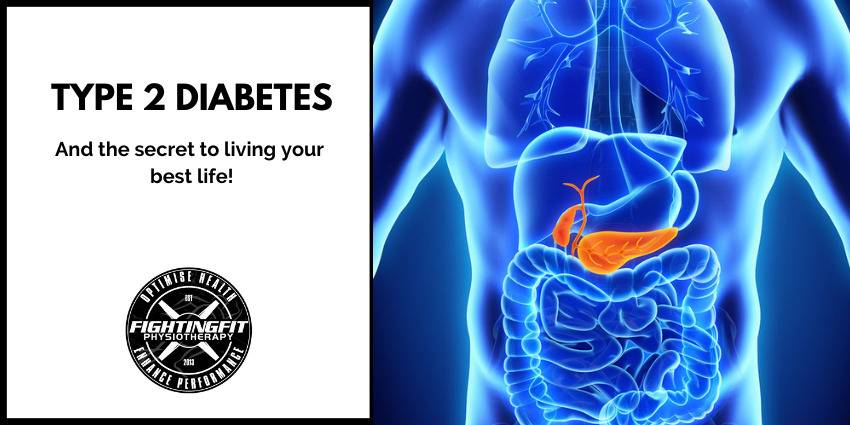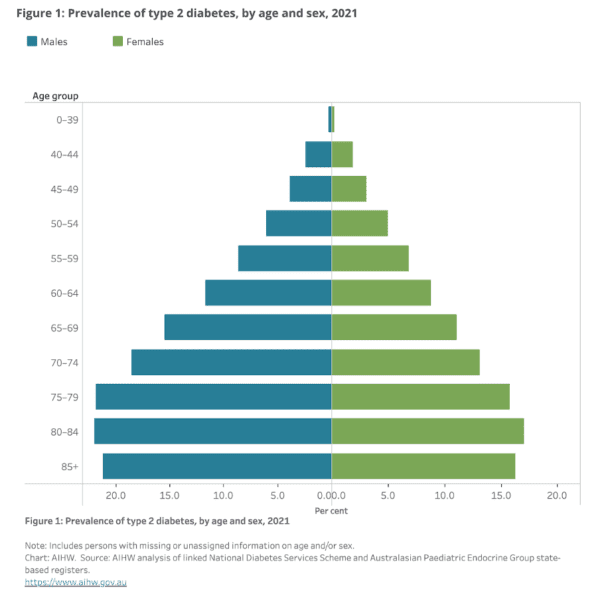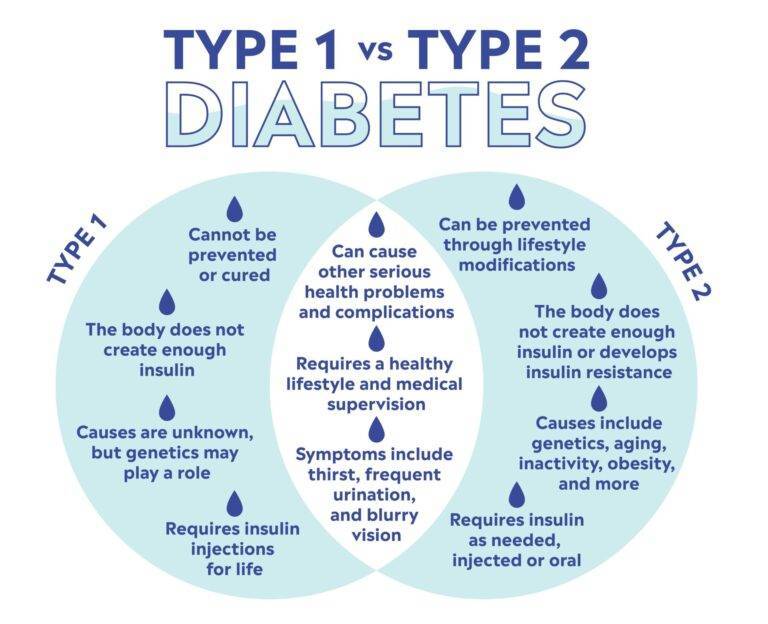The secret to living your best life with Type 2 Diabetes
What is the secret to living your best life with Type 2 Diabetes?

Living with Type 2 Diabetes can present various challenges and is quickly becoming one of the fastest growing diseases in Australia.
But with the right knowledge and lifestyle choices, individuals can effectively manage and even prevent complications associated with this condition.
Currently in Australia 1.2 million (4.5%) people are living with Type 2 Diabetes and that is just the ones that are registered with the National Diabetes Services Scheme. So the figure is likely higher. This has increased from 2% in 2000 which is now more then doubled in 20+ years.
What’s worse is those living with Type 2 Diabetes are at risk of various other health complications as well. Some of these people don’t even know they are living with this condition, how scary!

The main health complications of Type 2 Diabetes:
- Obesity
- Dyslipidaemia
- Hypertension
- Heart disease
- Kidney disease
- Mental health
- Sleep disorders
- Increased risk of cancer
Did you know there is a way to avoid the complications listed?
One of the most powerful tools we have to manage Diabetes and all of the health complications with it is regular physical exercise.
In this blog post, we will explore what Type 2 Diabetes is, its impact on health, and delve into the numerous benefits that exercise can provide for those affected by this condition.

So, what is Type 2 Diabetes anyway?
Type 2 Diabetes is a metabolic disorder characterised by high blood sugar levels resulting from the body’s inability to properly utilise insulin for the body to use glucose as fuel.
Insulin is a hormone produced by the pancreas, responsible for regulating blood glucose levels. With the impaired ability for insulin to regulate our blood sugar levels, we begin to see all the complications that were listed previously arise.
Several factors contribute to the development of type 2 diabetes, including genetics, lifestyle choices, obesity, and sedentary habits.
So even if you don’t have Type 2 Diabetes, what I am going to talk about today can help to prevent the disease from occurring.
There are various interventions that need to be used including diet and medication but, one of the most effective ways to manage and even prevent this disease from even occurring is exercise.

There are so many benefits to exercise the list goes on. Here are some of the main reasons it is so effective:
- Improved Insulin Sensitivity:
Engaging in physical activity enhances insulin sensitivity, allowing the body to use insulin more effectively.
This means that glucose is transported more efficiently from the bloodstream into cells, resulting in improved blood sugar control.
- Lowered Blood Sugar Levels:
Exercise directly lowers blood sugar levels by increasing glucose uptake by the muscles.
Physical activity prompts the muscles to utilize glucose for energy, reducing its concentration in the blood.
- Enhanced Insulin Production and Secretion:
Exercise has been shown to stimulate the production and release of insulin in individuals with Type 2 Diabetes.
By promoting the functionality of pancreatic cells responsible for insulin secretion, physical activity can contribute to better glucose control. - Cardiovascular Health:
Type 2 Diabetes increases the risk of heart disease and stroke significantly.
Exercise improve heart health which reduces the chances of cardiac events occurring. - Stress Reduction:
Stress can negatively impact blood sugar control in people with Diabetes.
Engaging in regular exercise provides an outlet for stress, helping to lower cortisol levels and improve mental health.
- Weight Management: Maintaining a healthy weight is crucial for managing Type 2 Diabetes.
Exercise helps control body weight by burning calories, improving metabolism, and preserving lean muscle mass.
Regular physical activity promotes fat loss and contributes to a healthier body composition. - Increased Energy Levels: Many individuals with Type 2 Diabetes experience fatigue.
Exercise can help combat this by increasing energy levels and reducing feelings of tiredness.
Physical activity stimulates the release of endorphins, known as “feel-good” hormones, which can enhance mood and overall well-being.
We know that incorporating regular exercise into the lifestyle of someone with Type 2 Diabetes can have profound positive effects on their condition and overall quality of life.
If you are unsure where to start with your exercise journey or have other health conditions and injuries that need to be taken into consideration our Exercise Physiologists are the right choice for getting you the best individualised treatment for your needs.
Get in contact with us today and we can get you on the right path to managing your health better.
Renae joined our Exercise Physiology team in 2021.
Having a long history in the health and fitness industry as well as growing up around all things exercise (her mum is also an Exercise Physiologist) this career runs in her blood.
Renae has a love of both strength and conditioning as well as pilates to help people over come injury, pain or health concerns.




